Grooming directly impacts your dog’s mental health and behaviour by reducing stress, encouraging calmness, and strengthening the bond between you and your pet. Regular grooming routines offer emotional stability, build trust, and help prevent behavioural issues caused by discomfort or neglect.
Understanding the Mind-Body Connection in Dogs
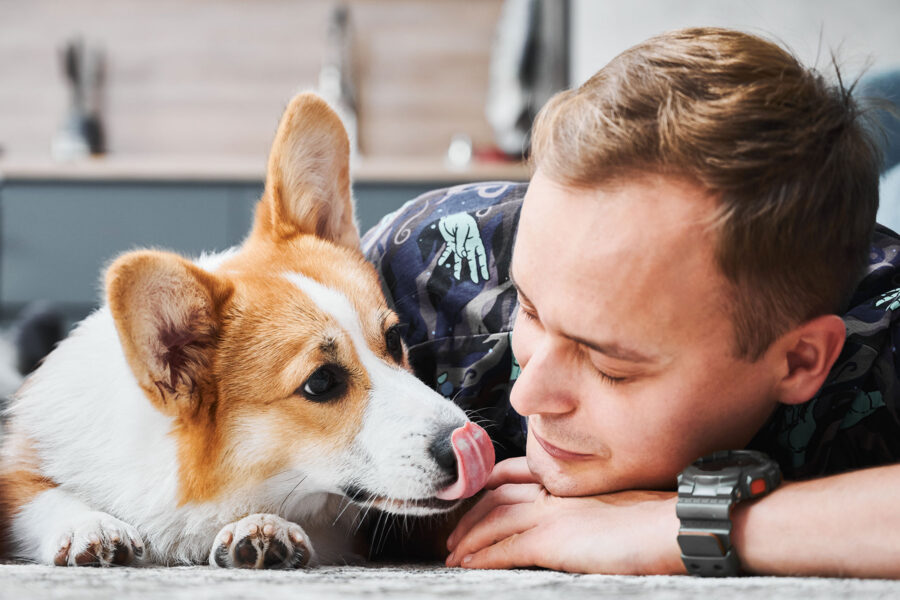
Grooming is more than just maintaining a dog’s appearance — it plays a vital role in supporting their emotional and behavioural health. At Careers Collectiv, we emphasise how consistent grooming practices can become a form of therapy for dogs, easing anxiety and promoting trust.
Key emotional benefits of grooming:
- Eases stress through calming touch
- Provides predictability and structure
- Enhances comfort by removing irritants like mats or overgrown nails
- Increases emotional bonding between dog and owner
The Link Between Grooming and Canine Mental Health
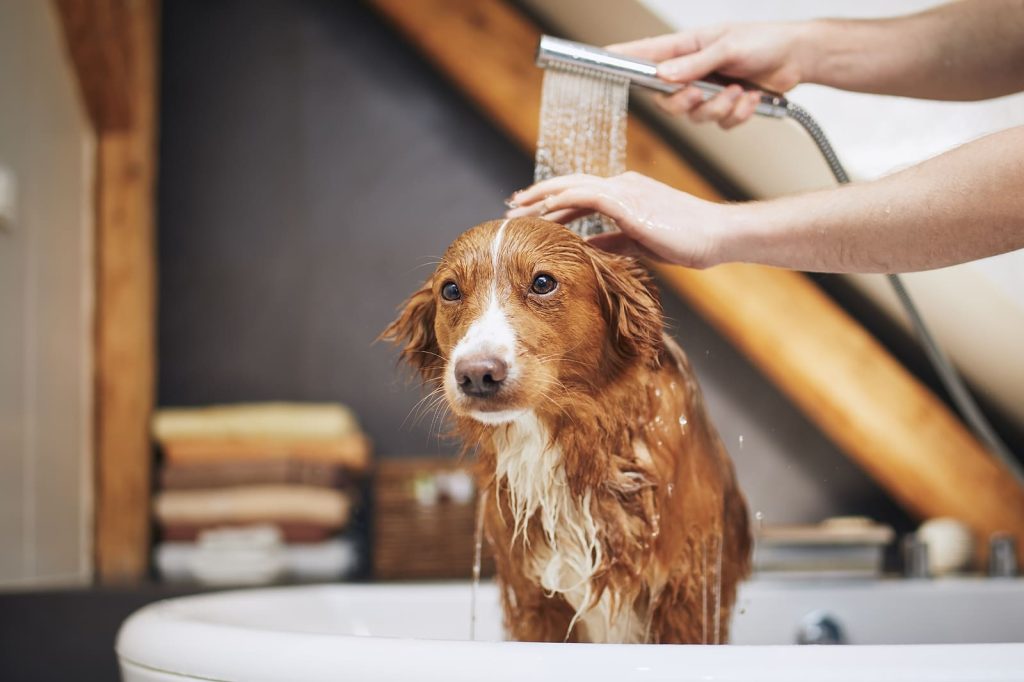
Dogs thrive on routine, and grooming introduces a familiar pattern that offers comfort. The act of brushing or bathing stimulates the skin, releasing endorphins — chemicals that naturally reduce anxiety.
Grooming also reinforces:
- Trust-building through gentle, repetitive handling
- Positive reinforcement when paired with treats or praise
- Desensitisation to touch, sounds, and tools
- Predictability that helps dogs feel secure
Why Regular Grooming Improves Dog Behaviour
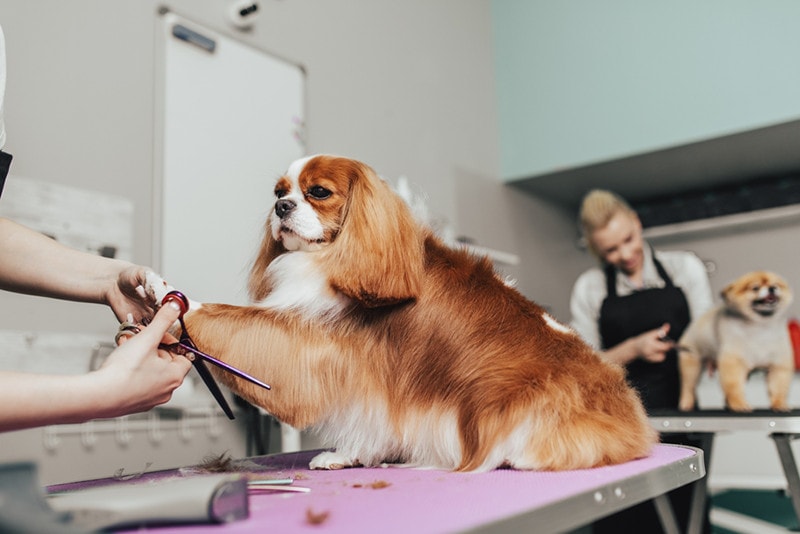
Behavioural issues often stem from discomfort, stress, or a lack of mental stimulation. Grooming helps to address all three.
Regular grooming supports better behaviour by:
- Reducing hyperactivity through calming routines
- Preventing aggression linked to physical pain (e.g. matted fur, long nails)
- Offering sensory stimulation that channels mental energy constructively
- Replacing anxiety-driven behaviours like chewing or scratching
Common Mental Health Issues in Dogs & How Grooming Helps
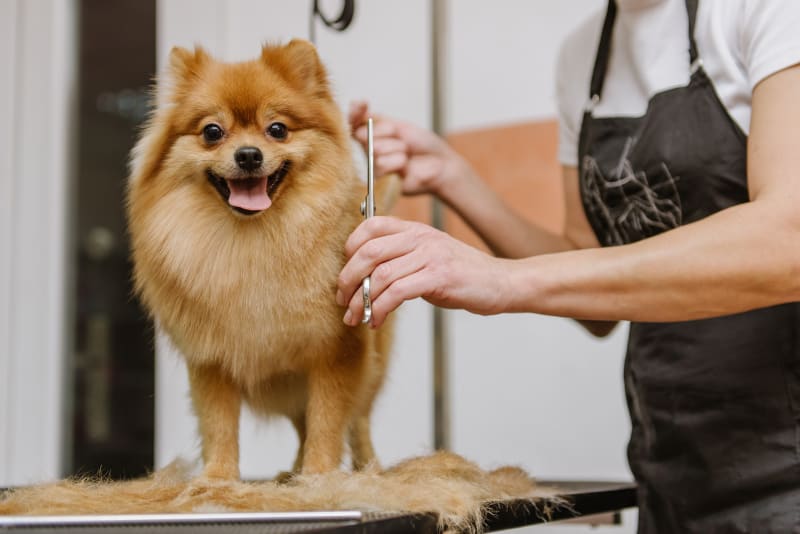
Many dogs silently suffer from mental health challenges. Grooming, when done right, can offer relief and even early detection of emotional distress.
Grooming benefits dogs facing:
- Separation anxiety — builds a sense of security in your absence
- Canine depression — grooming introduces positive, tactile experiences
- Obsessive behaviours — structured grooming helps redirect compulsions
- Overgrooming — can be a sign of stress; balanced grooming corrects the cycle
Signs Your Dog May Benefit from More Grooming
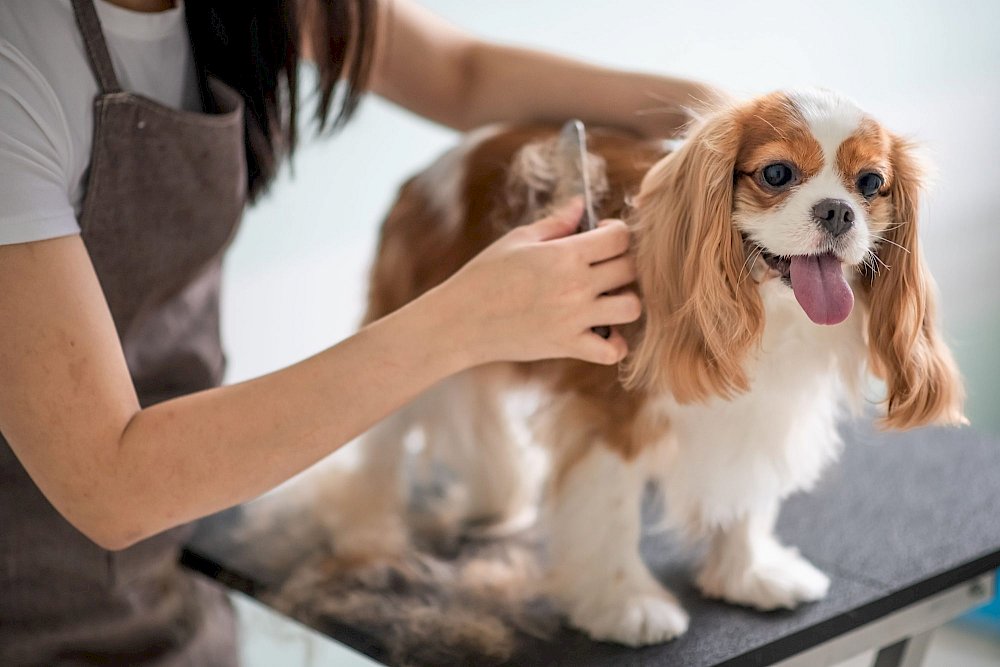
Not sure if your dog needs more grooming? Pay attention to these physical and behavioural signs.
Red flags to watch for:
- Excessive licking, scratching, or biting at fur
- Avoidance of touch or increased jumpiness
- Matted coat or dirty, dull fur
- Withdrawal from play or family interaction
- Over-alertness or restlessness
These signs may indicate discomfort, insecurity, or stress — all of which grooming can help resolve.
How to Make Grooming a Positive Experience for Your Dog
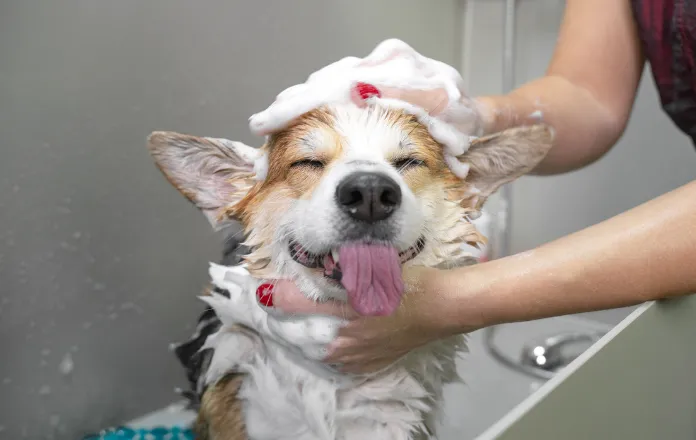
Grooming should feel like a bonding ritual — not a punishment or source of fear.
Tips to improve the grooming experience:
- Start slow with desensitisation techniques
- Use treat-based training to create positive associations
- Choose tools and products designed for your dog’s size and coat type
- Groom in a calm, quiet space with minimal distractions
- Use gentle, consistent motions and always end with praise or play
When grooming is enjoyable, it becomes a source of emotional regulation.
In-Home vs Professional Grooming: What’s Better for Mental Health?
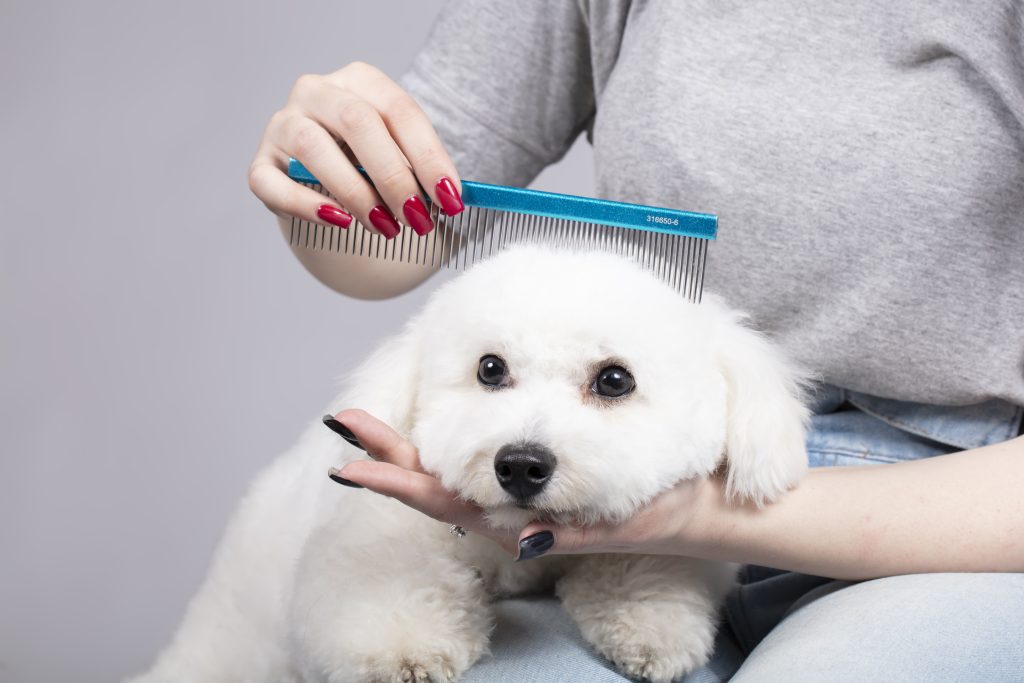
Both options can support your dog’s mental health — if done correctly. Choosing the best one depends on your dog’s personality, stress tolerance, and grooming needs.
Home grooming may be better if:
- Your dog gets anxious in unfamiliar environments
- You want to build direct trust with your pet
- You prefer flexibility and convenience
Professional grooming may be ideal if:
- Your dog has high-maintenance coat needs
- You’re unsure how to handle grooming safely
- Your dog enjoys social stimulation from groomers or other dogs
Mobile grooming offers a middle ground — professional care without leaving home.
- Your dog gets anxious in unfamiliar environments
Expert Tips from Dog Groomers and Behaviourists
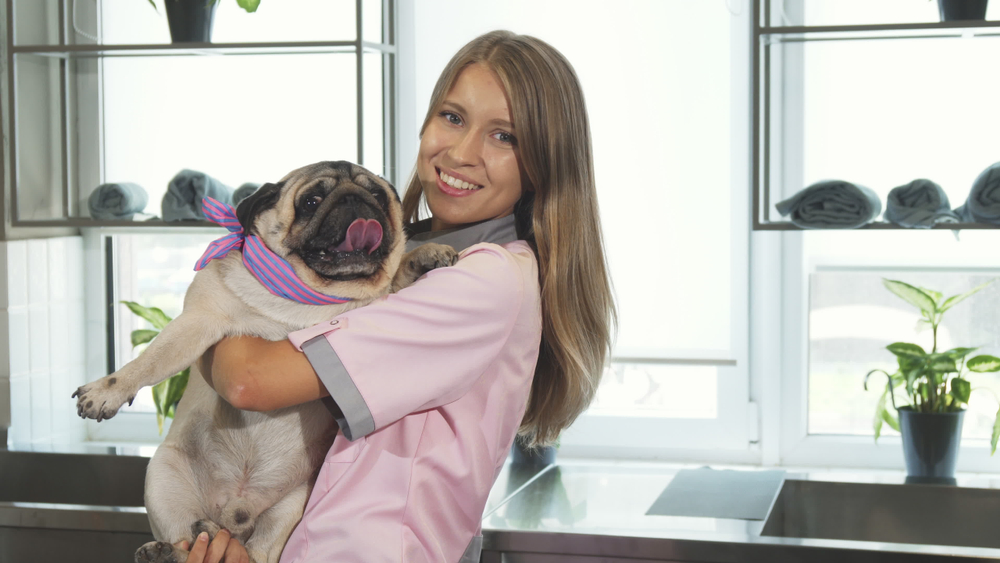
We spoke with grooming professionals and certified dog behaviourists to gather real-world advice:
Expert insights:
- “Consistency matters more than perfection. Make grooming a ritual, not a chore.”
- “Use massage techniques during brushing — it calms the nervous system.”
- “For anxious breeds, break grooming into small steps over multiple days.”
- “Check ears, nails, and paws often — pain in these areas causes hidden stress.”
- “Pair grooming with playtime to reinforce positive associations.”
Grooming and Mental Health by Breed: What You Should Know

Some breeds are more sensitive to grooming than others — both physically and mentally.
Breed-specific considerations:
- Poodles and Doodles: prone to matting; regular grooming avoids painful pulling
- Herding breeds (Collies, Aussies): thrive with structured routines
- Short-haired breeds: need grooming less often but still benefit from bonding time
- Toy breeds: often anxious, requiring gentle and quiet handling
Knowing your dog’s breed traits helps tailor a grooming approach that supports their mental well-being.
Can Neglecting Grooming Lead to Behavioural Issues?
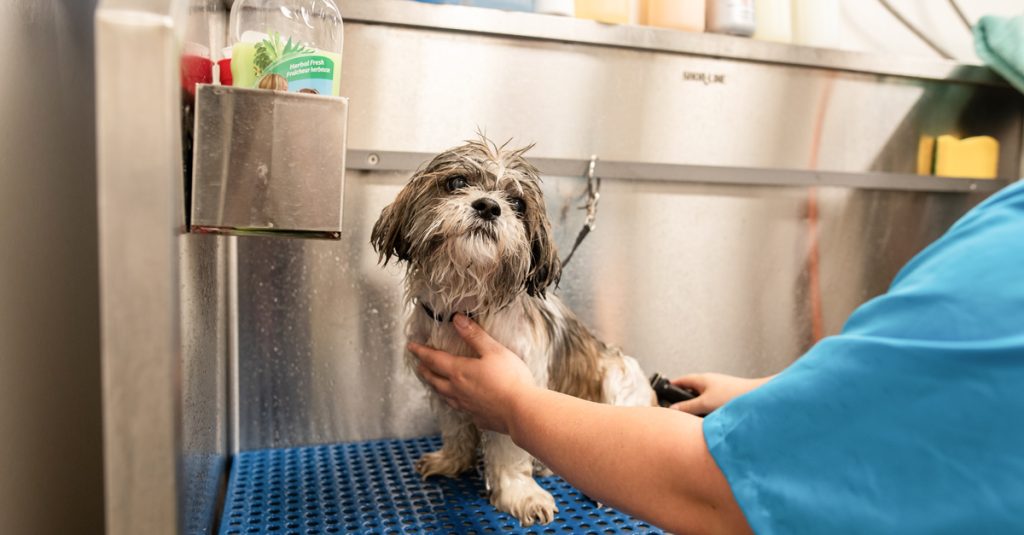
Yes — neglecting grooming can create physical pain and emotional distress, both of which contribute to behavioural problems.
Consequences of poor grooming:
- Matted fur causes skin infections, leading to irritability
- Overgrown nails distort walking posture, causing pain-induced aggression
- Tangled coats trap dirt and parasites, raising stress levels
- Discomfort often results in growling, hiding, or snapping
Regular grooming is a proactive way to avoid preventable issues.
Creating a Grooming Routine That Supports Your Dog’s Mental Well-being
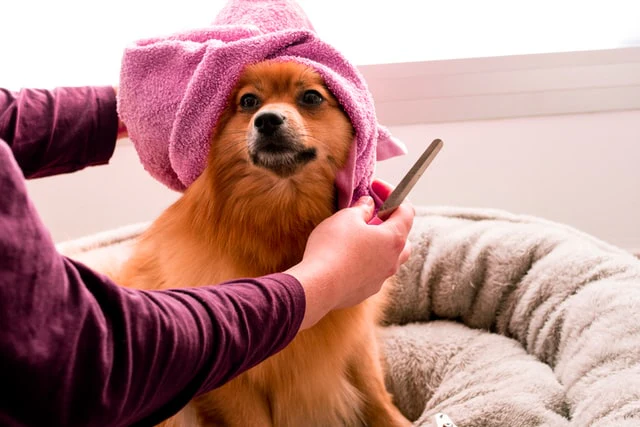
At Careers Collectiv, we encourage dog owners to treat grooming as part of a broader wellness strategy. If you want to learn more about caring for pets holistically, check out our animal welfare courses designed to help you better understand canine behaviour and emotional health.
Steps to build a healthy grooming routine:
- Set a consistent schedule (weekly brushing, monthly baths, etc.)
- Combine grooming with other bonding rituals like walks or training
- Use grooming as a chance to check for lumps, bumps, or changes
- Adjust routines as your dog ages or seasons change
- Monitor your dog’s behaviour before and after sessions to track improvements
A grooming routine isn’t just about cleanliness — it’s about care, connection, and calm.